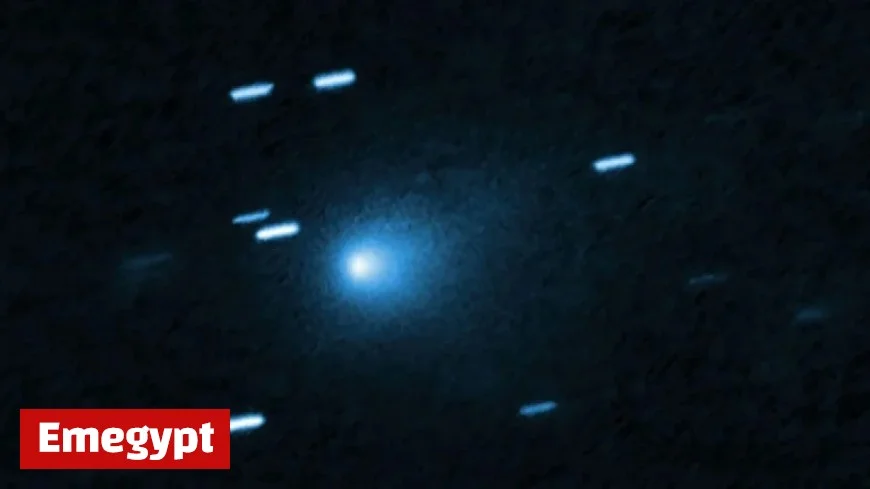Interstellar Visitor 3I/ATLAS Changes Color for Third Time

Recent observations have unveiled that interstellar comet 3I/ATLAS may be developing a bluish hue after undergoing a significant brightening event while obscured by the sun. This marks the third occasion experts have noted a potential color change in the comet, though none have been permanent thus far.
Overview of 3I/ATLAS
3I/ATLAS is the third-known interstellar object identified in our solar system. Initially spotted racing toward the sun at speeds exceeding 130,000 mph (210,000 km/h) in early July, this comet is believed to be the oldest of its type, likely ejected from its original star system over 7 billion years ago.
Recent Developments
After making a close approach to Mars in early October, 3I/ATLAS has remained largely hidden, located on the far side of the sun from Earth. However, it is becoming visible to telescopes on our planet once more. The comet reached perihelion, its closest point to the sun, on October 29, when it was approximately 130 million miles (210 million kilometers) away from the sun, about 1.4 times the average distance of Earth from the sun.
Color Change Observations
On October 28, researchers analyzing data from spacecraft noted a brightening of the comet, which cannot be fully explained by its proximity to the sun. They determined that 3I/ATLAS appears “distinctly bluer than the sun,” a surprising deviation given its previous colorations.
- Initial Color: Red hue observed in July due to dust on its surface.
- September Appearance: Briefly turned green, likely from dicarbon or cyanide.
- Current Observation: Potential bluish tint that remains unconfirmed.
While these color variations have not stabilized, researchers suggest that the bluish hue may result from gases like carbon monoxide or ammonia leaking from the comet.
Future Visibility and Research
Over the coming weeks, 3I/ATLAS will become increasingly visible to stargazers in the Northern Hemisphere. However, it will not be noticeable to the naked eye, requiring telescopes or binoculars to observe properly. The comet is projected to reach its closest point to Earth on December 19, at a distance of approximately 168 million miles (270 million kilometers), or about 1.8 times the Earth-sun distance.
Potential Scientific Insights
In the time leading up to December, researchers expect to gain further insights into the comet’s characteristics. Two ESA spacecraft may cross through its extensive tail, enabling more detailed analysis. The comet has showcased several peculiar traits, including:
- High levels of carbon dioxide and water leakage.
- A puzzling phenomenon known as an anti-tail.
- Altering of its icy shell due to cosmic ray bombardment over billions of years.
Despite some speculative claims that 3I/ATLAS could represent alien technology, most experts agree it displays typical comet behavior. Ongoing observations will be crucial in understanding this intriguing interstellar visitor.





























